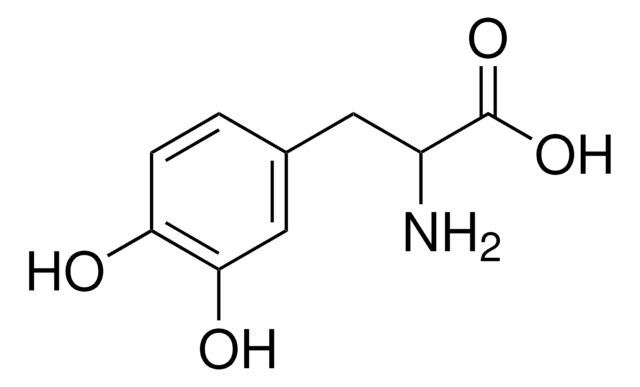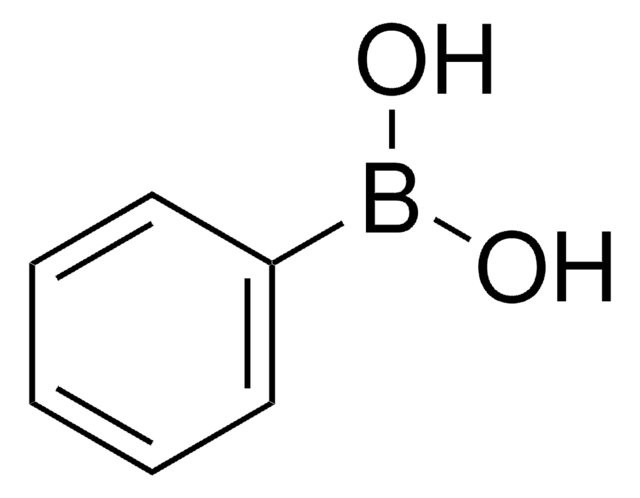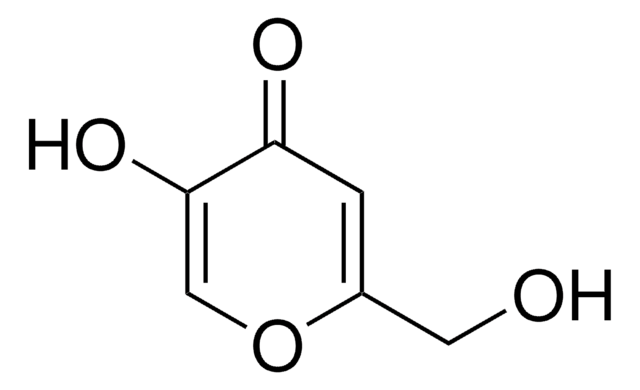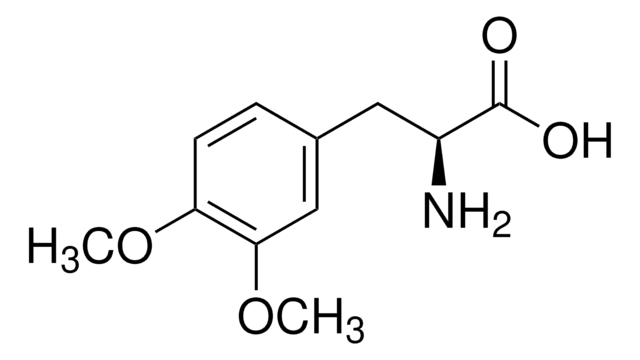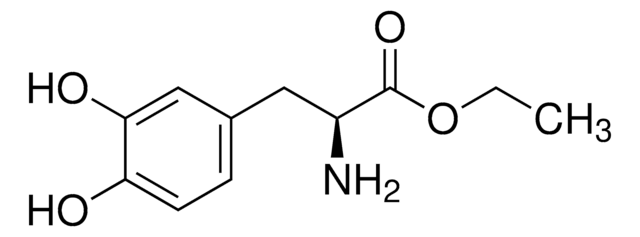D9378
3,4-Dihydroxy-D-phenylalanine
≥95% (TLC), powder, DOPA enantiomer
Sinónimos:
3-(3,4-Dihydroxyphenyl)-D-alanine, D-3-Hydroxytyrosine, D-DOPA
About This Item
Productos recomendados
Nombre del producto
3,4-Dihydroxy-D-phenylalanine, powder, ≥95%
Nivel de calidad
Ensayo
≥95%
Formulario
powder
mp
276-278 °C (lit.)
solubilidad
1 M HCl: soluble
ethanol: insoluble
temp. de almacenamiento
−20°C
cadena SMILES
N[C@H](Cc1ccc(O)c(O)c1)C(O)=O
InChI
1S/C9H11NO4/c10-6(9(13)14)3-5-1-2-7(11)8(12)4-5/h1-2,4,6,11-12H,3,10H2,(H,13,14)/t6-/m1/s1
Clave InChI
WTDRDQBEARUVNC-ZCFIWIBFSA-N
¿Está buscando productos similares? Visita Guía de comparación de productos
Aplicación
Acciones bioquímicas o fisiológicas
Aplicación
Código de clase de almacenamiento
11 - Combustible Solids
Clase de riesgo para el agua (WGK)
WGK 3
Punto de inflamabilidad (°F)
Not applicable
Punto de inflamabilidad (°C)
Not applicable
Equipo de protección personal
Eyeshields, Gloves, type N95 (US)
Elija entre una de las versiones más recientes:
¿Ya tiene este producto?
Encuentre la documentación para los productos que ha comprado recientemente en la Biblioteca de documentos.
Los clientes también vieron
Chromatograms
application for HPLCapplication for HPLCNuestro equipo de científicos tiene experiencia en todas las áreas de investigación: Ciencias de la vida, Ciencia de los materiales, Síntesis química, Cromatografía, Analítica y muchas otras.
Póngase en contacto con el Servicio técnico


